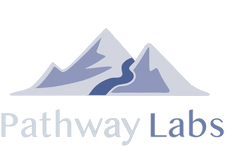In an era defined by technological advancements and increasing demands for efficiency, educational institutions are embracing digital solutions to simplify their administrative processes. School admissions, a critical and often complex aspect of any educational institution, can benefit immensely from the implementation of school admissions software.
This powerful tool not only reduces administrative burdens but also enhances the overall experience for applicants, parents, and school administrators. In this post, we will explore the numerous reasons why adopting school admissions software is crucial for your school in today's fast-paced educational landscape
1. Simplified Application Process
Traditional paper-based admission processes are time-consuming, prone to errors, and can overwhelm both applicants and administrators. By utilizing admissions software, schools can streamline the entire application process, making it user-friendly and efficient. Online forms and portals enable applicants to submit their information and documents easily, eliminating the need for physical paperwork. This simplification saves time, reduces manual errors, and facilitates a faster review and response cycle. For example, with MyPath, you can fully digitize the admissions application and send documents for students to sign electronically.
2. Enhanced Data Management
School admissions generate vast amounts of data, including applicant details, test scores, and documents. Manually organizing and managing this data is an arduous task that can lead to data inconsistencies and security risks. Admissions software centralizes all applicant data in a secure, cloud-based system, ensuring easy access, accuracy, and data privacy. Administrators can efficiently track and analyze application data, generate reports, and make data-driven decisions to improve their admissions processes.
3. Automated Communication
Communication plays a vital role throughout the admissions journey. School admissions software enables automated communication, reducing the need for manual follow-ups and ensuring timely and consistent updates. Applicants and parents can receive notifications about application status, interview schedules, and other important information. This automation saves time for administrators, enhances transparency, and keeps all parties informed and engaged during the admissions process.
4. Comprehensive Applicant Evaluation
A robust admissions software provides a wide range of evaluation tools to assess applicants comprehensively. From reviewing academic records and conducting interviews to assessing extracurricular achievements, the software enables administrators to holistically evaluate candidates. The system can assign scores, track evaluations, and generate detailed reports, allowing for fair and informed decision-making. This comprehensive evaluation process ensures that the best-suited candidates are selected, contributing to the overall excellence of the institution.
5. Improved Collaboration and Coordination
Admissions software fosters seamless collaboration among various stakeholders involved in the admissions process. It allows administrators, faculty, and admission committee members to access and share applicant information securely. Communication gaps are minimized, and collaboration becomes more efficient. This enhanced coordination enables quick resolution of queries, promotes teamwork, and ultimately leads to a smoother admissions process.
6. Enhanced Applicant Experience
A positive applicant experience is crucial for attracting and retaining talented students. School admissions software offers a user-friendly interface, simplifying the application process for applicants and parents. They can track their application status, submit required documents, and receive updates conveniently. This transparency and ease of use contribute to a positive perception of the institution, creating a favorable impression in the minds of prospective students and their families.
7. Customizable Workflows
Every educational institution has unique admissions requirements and processes. School admissions software offers the flexibility to customize workflows based on specific needs. Administrators can define stages, set criteria, and configure automated actions to align with their institution's admissions policies. This adaptability ensures that the software caters to the specific requirements of each school, promoting efficiency and adherence to established protocols.
8. Integration with Existing Systems
Admissions software can seamlessly integrate with other existing systems within the educational institution, such as student information systems (SIS), learning management systems (LMS), or finance systems. This integration eliminates redundant data entry, enhances data accuracy, and facilitates a smooth flow of information across various departments. It ensures that all relevant data is easily accessible in a centralized location, improving efficiency and reducing administrative overhead.
9. Data Analysis and Reporting
School admissions software provides powerful analytics and reporting capabilities. Administrators can generate insightful reports on application trends, conversion rates, demographic data, and other key metrics. These analytics enable institutions to make data-driven decisions, refine their recruitment strategies, and identify areas for improvement. By leveraging data analysis, institutions can enhance their admissions processes and attract a diverse and talented student body.
10. Cost and Time Savings
Implementing school admissions software can result in significant cost and time savings for educational institutions. The reduction in manual paperwork, streamlined processes, and automated workflows reduce administrative workload and free up staff to focus on higher-value tasks. Additionally, the elimination of printing, postage, and storage costs associated with paper-based admissions processes can lead to substantial financial savings over time.
11. Regulatory Compliance
Admissions software assists educational institutions in complying with various regulatory requirements and data protection laws. The software ensures secure storage of applicant data and enables institutions to obtain consent and manage data in accordance with privacy regulations such as the General Data Protection Regulation (GDPR) or the Family Educational Rights and Privacy Act (FERPA). By adhering to these regulations, schools can build trust with applicants and maintain their reputation.
12. Scalability and Growth
As educational institutions expand or introduce new programs, scaling the admissions process can become a challenge. School admissions software provides scalability to accommodate growing applicant volumes and changing requirements. The software can handle a large number of applications efficiently, ensuring a smooth admissions experience even during peak periods. This scalability supports institutional growth and helps maintain a high standard of admissions quality.
In Conclusion
In an increasingly competitive educational landscape, implementing school admissions software has become imperative for educational institutions. By simplifying the application process, improving data management, automating communication, facilitating comprehensive applicant evaluation, enhancing collaboration, and improving the applicant experience, admissions software optimizes the admissions journey for all parties involved.
This transformative tool not only saves time and resources but also enhances the institution's reputation by delivering an efficient and user-centric admissions process. Embracing technology in school admissions is a forward-thinking step that paves the way for improved administrative efficiency and a positive educational experience for all. By leveraging technology, educational institutions can stay ahead in the competitive landscape and focus on their core mission of delivering quality education.
If you’re looking for a system that can help you streamline your school’s admissions process, click here to learn more about MyPath.

